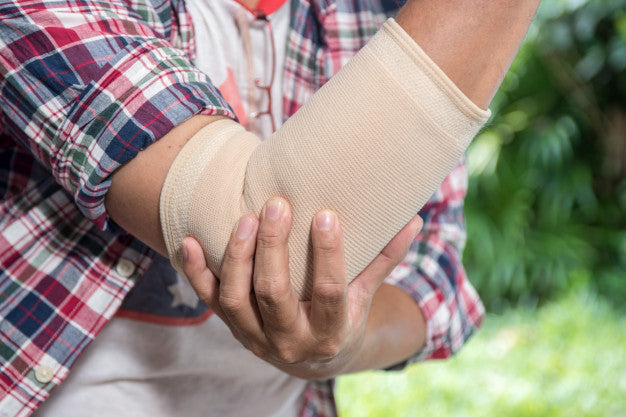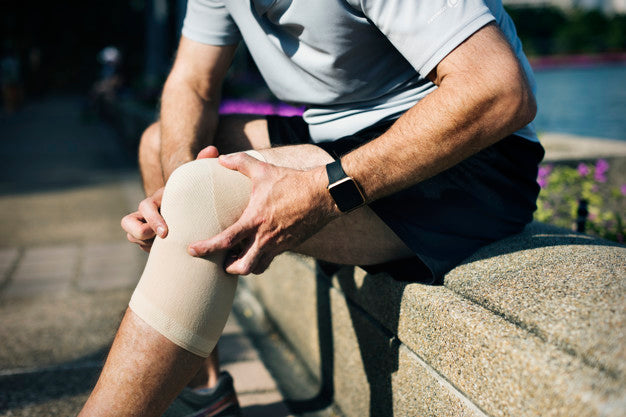The health and fitness clothing industry has evolved effectively in the last few decades. With so many styles and types, these specialized clothes are impressing individuals more than ever. Recovery clothing is one of the members of this specialized clothing family and is grabbing attention nowadays.
Although there are various uses of this type of clothes, they are mainly used to reduce pain and muscle inflammation. And so, they are termed as anti-inflammatory recovery wear.
But before you go for shopping these clothes, you may like to know about inflammation and how these clothes help reduce inflammation. Let’s explore here together -
What is inflammation?
Inflammation is the immune system’s defense mechanism and plays a vital role in the recovery process. When the body detects an intruder, it releases inflammatory chemicals in the bloodstream as a biological response to protect the body from bacteria, viruses, and other organisms, which cause infections.
According to experts, inflammation can contribute to a broader range of chronic diseases, and people suffering from these conditions can have higher levels of inflammatory markers in their bodies.
What are the types of inflammation?
There are two main types of inflammation - acute and chronic.
- Acute inflammation
Generally caused by injuries, including a sprained ankle, or by injuries, such as bacterial infections and common viruses, this type of inflammation can be severe. Have you ever broken a bone or cut yourself? Then, you have experienced such kind of inflammation.
The common signs include -
- Redness
- Stiffness
- Bruising
- Loss of mobility
- Pain and tenderness
- Warmth at the injury site
- Swelling, bumps, or puffiness
And the symptoms are
- Fever
- Headache
- Lethargy
- Nausea
- Irritability
- Sleepiness
- Sore throat
- Runny nose
- Stuffy nose
Based on the signs and symptoms, this inflammation can last from a few days to a few months.
- Chronic inflammation
Chronic or long-term inflammation can last for years or even for a lifetime. It often begins even when there is no injury or illness present and lasts far longer. This type of inflammation is one of the several contributing factors in disease onset and progression. The most vital link between chronic inflammation and disease has been seen in type 2 diabetes and heart disease.
Other conditions that contribute to this type of inflammation include -
- Kidney disease
- High blood pressure
- High cholesterol
- Depression
- Various types of cancer
- Osteoporosis
- Autoimmune disorders
- Fatty liver disease
- Neurodegenerative disorders
The causes of chronic inflammation are:
- Physical activity
- Diet
- Obesity
- Smoking
- Stress
- Age
- Sleep disorders
- Low sex hormones
How do recovery gears help reduce inflammation?
How well you recover from a workout or inflammation has a lot to do with the clothing you wear during it. Recovery apparel is effective to lower soreness after exercise and helping athletes recover faster from any lingering effects. Studies have found that compression apparel reduces, if not eliminates muscle pain and inflammation along with improving endurance and performance.
So, how does recovery wear help with recovery? Here is the answer -
- Compression lowers lactic acid
During exercise, the blood in our extremities is depleted of its nutrients and oxygen. Without enough oxygen to complete the task, the body starts to generate lactate tat later turns into energy. However, when lactate is produced, an excess amount of unused lactate can collect in the extremities and cause muscle soreness.
Recovery clothes use a graduated tightness that helps your body move the depleted blood back to the heart quickly and prevents lactic acid from building up in your extremities.
- Compression reduces vibrations
When you jump or run, tiny vibrations are sent rippling through your muscles. This repeated vibration acts as a microtrauma to the muscles that causes soreness and fatigue soon after. Recovery clothing keeps the muscle in place and tightly packed to the body, so the vibrations are minimized.
- Compression regulates temperature
Heat cramps can happen when you exercise in extreme heat, while cold weather can cause muscles to tighten up. Recovery clothes help regulate your body temperature to cool you down when it is hot. And when it is cold, the cloth warms you up. Thus, it maintains a healthy working temperature for your muscles.
- Compression eradicates blisters
A blister can delay your recovery. However, the targeted padding, anatomical fit, and no-slip design of recovery clothes reduce friction and eliminates blisters.
Breaking down the level of compression
Available in five levels, compression or recovery devices offer pressure that ranges from 8 to 50 mmHG and are designed for specific tasks. Your choice for the level depends on several things, including the severity of the pain, your preferences, and more.
- Breaking down the levels of compression
Recovery or compression devices are available in five levels. They offer pressure that ranges from 8 to 50 mmHG, and each level is designed for specific tasks and patient needs. And the choice of your level depends on the severity of the pain, the medical condition being treated, as well as your preferences.
- Mild compression
It is the lowest level of compression available. These recovery gears offer light pressure (between 8 to 15 mmHg) and designed to relieve soreness in aching joints and body areas. Moreover, these provide mild stimulations that can help prevent varicose or spider veins.
- Medium compression
Medium compression ranges from 15 to 20 mmHg and is generally used to provide relief for more severe aches and pains either in joints or muscles. Besides, it is ideal for use in long-distance travel to improve circulation. Moreover, it relieves the stiffness and soreness associated with traveling and long periods being cramped and stationary.
- Firm compression
It is a compression that ranges from 20 to 30 mmHg. And it refers to the level at which compression garments are no longer intended for relieving soreness or achy muscles and joints. Instead, firm compression is used to promote the circulation of blood or lymphatic fluids. It is because of this, itis often used for patients in a postoperative setting. With this, circulation may be decreased, or for medical conditions like blood pooling in the feet or diabetic neuropathy.
- Extra-firm compression
Characterized by 30 to 40 mmHg, this compression is used to relieve same kind of conditions like firm compression. It offers more pressure for larger patients or more severe symptoms and can be used to promote circulation, treat severe edema, and relieve hypertension.
- Medical compression
It offers the highest level of pressure available, which ranges from 40 to 50 mmHg. Medical-grade compression is used in medical treatment and rehabilitation. Mainly found in compression stocking and thromboembolic deterrents, medical compression can only be obtained with a prescription. And it is used mostly for post-surgical conditions to prevent the pooling of the blood or other circulation problems that is observed in patients with limited mobility.
Kinds of recovery clothes that you can use
Owing to different medical conditions and body regions that recovery wear can be used to benefit, the selection of recovery attires is equally vast. And the types include -
- Recovery socks and stockings
These are most probably the most common type of recovery clothing. Made out of a strong, but breathable material, these clothes provide pain relief and circulatory support for the legs and feet.
For fluid circulation, these garments apply graduated compression to pump fluid from the feet back towards the body.
Also known as recovery braces, they are either short or long tubes of compression fabric. They apply compression around 360-degrees of a joint or limb.
Generally used to support the elbows and knees, compression sleeves are also available in various designs that cover the arm, calf, wrist, feet, or ankle. By applying firm, even pressure, they help users move comfortably and relieve the aches and pains of swollen joints and sore muscles.
These gloves are mainly used to treat the aches and pains related to carpal tunnel syndrome, arthritis, and Raynaud's. Besides, these thin, comfortable gloves apply compression over the small joints of the hand and fingers. And thus, it helps insulate the joints to soothe away aches and pains. Different designs are available to ensure maximum comfort for a range of user needs, fingerless short, full hand, or long enough to cover the wrist.
How to choose?
Recovery garments fit snugly to a specific limb or body area to apply pressure and boost recovery. Choosing such a garment mostly depends on -
- The condition that you will treat
- The level of its severity
- The area of the body to be treated
The intersection of these factors provides a good compass for which garment will best suit your unique needs. But there are other factors like age and weight that can contribute to unique needs. So, if you are planning to wear recovery wear to treat a specific condition, it is always a good idea to discuss this with your doctor before making a decision.
The Takeaway
When it comes to recovery and reducing inflammation, recovery clothes offer you the best support. Are you also eager to choose these clothes as your boon and looking for shops that offer these? Opt for us, at Incrediwear. Whether you need a hip brace or support sleeve for the arm or something else, we will deliver it to your doorstep. So, what to wait for? Order now and boost up recovery.Read more

Have you seen the tight, vibrant colored socks in runners' legs during a race or the patterned black sleeves on guys overhead pressing barbells? Of course, you have. And if you have not, then you a...

Have you seen the tight, vibrant colored socks in runners' legs during a race or the patterned black sleeves on guys overhead pressing barbells? Of course, you have. And if you have not, then you a...






Leave a comment
All comments are moderated before being published.
This site is protected by hCaptcha and the hCaptcha Privacy Policy and Terms of Service apply.